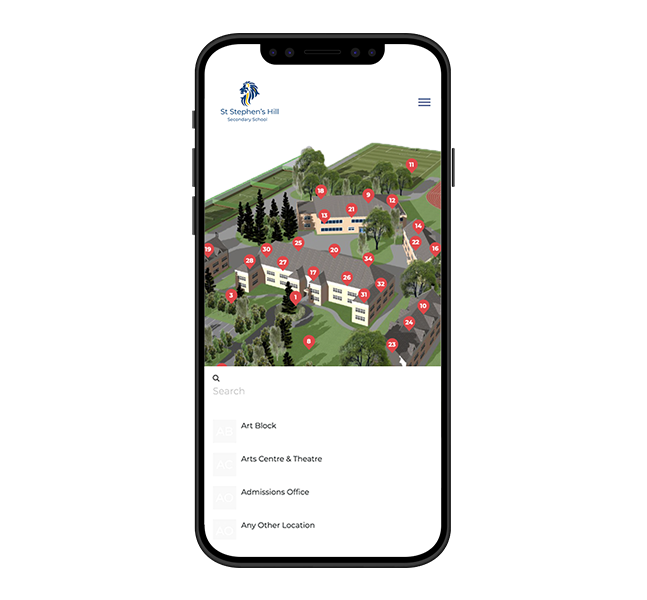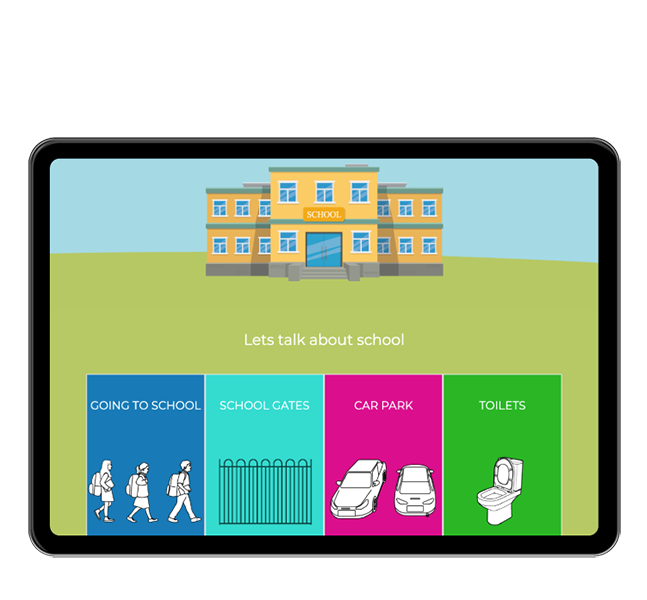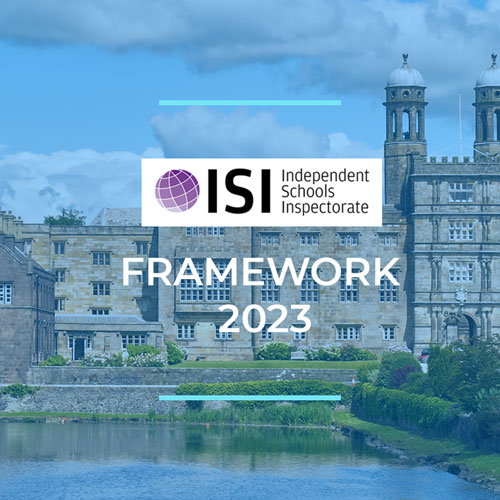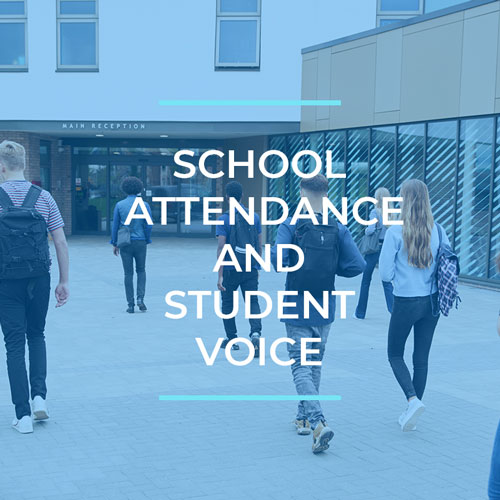What is Contextual Safeguarding?
A Child-Centred Approach to Safeguarding.
Contextual safeguarding is an approach to understanding, and responding to, young people’s experiences in a range of social contexts, and ultimately expanding child protection system objectives beyond their families, to recognise young people are vulnerable to significant harm in these areas.
The contextual safeguarding framework was developed by Dr. Carlene Firmin at the University of Bedfordshire. It recognises that as a child or young person grows, the range of environments and the number of people outside of their family expands. This included within educational environments such as school or college, in their groups of friends, within the community and local area where they live, and even online.
Children and young people can encounter risk in any or all of these different environments and/or with these additional individuals in their life. When these environments and groups of people overlap, there might even be multiple risks. This is often called extra familial abuse.
The risk can vary, depending on the area in which the young person lives or socialises. In areas with a lot of problems surrounding gang culture, gun and knife crime might be a key safeguarding issue. We also know that young people communicate largely through social media, which can leave them unknowingly exposed to the risks of online grooming and harmful content.
The contextual safeguarding approach looks at how professionals could understand those risks, engage with the children or young people involved, and ensure their safety. This is an approach that’s more frequently been used to apply to teenagers, but the theory can equally be used with younger children, especially as children are exposed to larger groups earlier through the internet and use of technology.
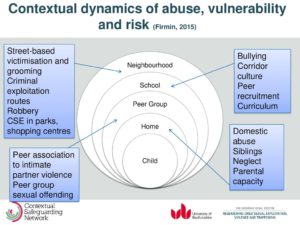
[Image Source: Contextual Safeguarding Framework, Dr Carlene Firmin, 2015]
Contextual safeguarding sets out to create a response to extra-familial abuse in the following ways:
- From initial assessment through to intervention, those involved should be targeting the contexts in which abuse is occurring or has occurred.
- A critical part of the contextual safeguarding approach is that instead of a ‘crime reduction’ approach to community safety, the framework is to address extra-familial risk from a ‘child welfare’ perspective.
- Making use of partnerships with individuals and sectors within the community, education and health and social care systems. This includes professionals such as youth workers, social workers and medical professionals, as well as school workers. Then this extends to everyone within the community including transport providers, businesses in the local area, residents’ associations, parks/recreation services and community organisers.
- The success of the contextual safeguarding framework should be assessed with reference to the nature of the context in which harm has been occurring or has occurred, instead of just focusing on behaviour changes from the child or young person that was at risk in those contexts.
A two-tier contextual safeguarding approach
The first tier acknowledges the extra-familial context more overtly, including talking to parents and carers and engaging young people in activities where they can safely and openly explore their feelings. Using a mix of both public and private spaces are a critical aspect here.
In this first tier, instead of ‘safety planning’ with the child or young person – focusing on the actions that they are able to take, those involved might additionally focus on ‘safety mapping’. This is where a child or young person is able to put their decisions in context by identifying individuals within the community that they could reach out to if they were feeling vulnerable.
At the second tier, individuals and sectors involved in the contextual safeguarding framework should work to create resources and approaches for assessing and interacting with groups, education settings and public spaces, identified as ones in which children and young people have experienced abuse.
This could include looking at ways to conduct observations in the community in the same way as they would in a home visit. This might incorporate creating safeguarding hubs within the community to build plans for contexts that have been assessed. At Tier 2 you would not only recognise the contexts in which a young person might be subject to abuse but actively work to tackle them.
Contextual safeguarding in government policy
Contextual safeguarding is referenced in the government’s guidance ‘Working Together to Safeguard Children’ and ‘Keeping Children Safe in Education’, or ‘KCSIE’, acknowledging that abuse in extra-familial contexts creates child protection issues and that environmental factors linked to this kind of abuse should be addressed.
Outlined in KCSIE 2023, is a section on specific safeguarding issues…
“All staff should be aware that safeguarding incidents and/or behaviours can be associated with factors outside the school or college and/or can occur between children outside of these environments. All staff, but especially the designated safeguarding lead (and deputies) should consider whether children are at risk of abuse or exploitation in situations outside their families. Extra-familial harms take a variety of different forms and children can be vulnerable to multiple harms including (but not limited to) sexual exploitation, criminal exploitation, and serious youth violence.”
Contextual Safeguarding and The Student Voice
The contextual safeguarding framework is paramount to keeping young people safe, and there is a large push to ensure the abuse that occurs to children and young people from extra-familial contexts is prevented and addressed moving forward. Past cases have revealed significant ongoing risks to young people, and individuals and sectors should work to prevent this moving forward.
The Student Voice page provides a platform for young people to share their life experiences in any context: schools, home learning, the local community, sports clubs and places of higher and further education. Young people have the capacity to share positive and negative experiences that reflect their life experience. Community leaders will have the opportunity to better understand the social fields and rules that dictate the lives of young people and by doing so, will have an increased chance of providing meaningful interventions.

